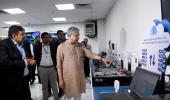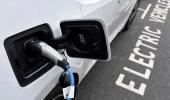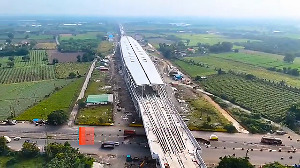The company has embedded intelligence in every layer of its value chain, marked by predictive maintenance, AI-powered image recognition and robotic automation.

A commercial vehicle manufacturer messages a truck driver to change gears or alerts fleet owners about excessive clutch usage.
Ashok Leyland is using artificial intelligence (AI), machine learning (ML) and other technologies to do that and make vehicles “smart” and safer.
At present, the 75-year-old company has more than 170,000 connected medium and heavy commercial vehicles (MHCVs) nationwide.
It processes more than 40,000 transactions per second and analyses over 6 million data points to deliver actionable insights and value to customers.
The company said it has embedded intelligence in every layer of its value chain, marked by predictive maintenance, AI-powered image recognition and robotic automation.
“Using the data, information on terrain, and condition of the vehicle, there are occasions in which our team will call the users and ask them to shift to a particular gear. Or alert them if a driver is using the clutch more often. All these help in increasing the life and efficiency of a vehicle. I strongly believe that operational efficiency can go as high as 10 per cent because of this,” said Ganesh Mani S, chief operating officer of Ashok Leyland.

The company started its digital journey in 2007 by launching iAlert, a simple GPS-based tracking solution with gear-shift advisory.
The tool has evolved into a sophisticated, multilayered digital ecosystem that studies more than 110 parameters per vehicle.
Every hour, Ashok Leyland vehicles generate 3.2 million data points that are used as actionable intelligence by platforms like iAlert, ION for electric vehicles and FOTA to assist fleet operators, service dealers and the company’s internal teams.
The data and platforms provide insights on productivity, vehicle utilisation, fuel efficiency, driver behaviour, safety and remote diagnostics.
Features like 'track and trace' and alerts in case of fuel theft, harsh braking or acceleration, and speeding mean maintenance and solutions can be predictive and not reactive.
“When you work on the total ownership cost, our technology is very useful. The customer can always see the cost from point A to point B, the driving quality of the people, and based on this, can incentivise drivers. We have a centre located in one of our units to monitor how the entire fleet is operated. Along with the IT, quality, and service team, we have integrated multiple advantages of using data analytics,” said Mani.
As part of a cultural shift, the company is forming a team of 100 data scientists on its shop floor and training them to solve real-world problems and drive intelligent decision-making.
Production is supported by collaborative robots (cobots), AI models, and Internet of Things (IoT) sensors.
“Our homegrown IoT solution, MPAS, has connected over 1,000 pieces of equipment, capturing 650,000 data points per day to create traceability and improve operational efficiency along with the support of the M-Alert (Maintenance Alert) system deployed,” he said.
The company said that it will improve connected mobility by integrating digital fleet management, prognostic alerts and chatbot-based support in new vehicles.
Feature Presentation: Rajesh Alva/Rediff











